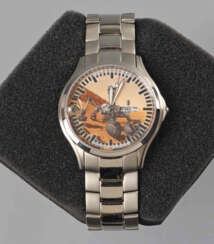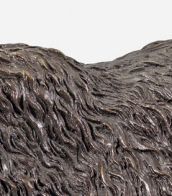curiosa


Heinrich Jacob Sivers was a German Evangelical Lutheran theologian and scholar, poet and writer, naturalist and collector.
Sifers studied law and theology at the University of Kiel, and received his doctorate at the University of Rostock, where he lectured and wrote various works. He wrote many poems, sermons and ceremonial speeches in German, Swedish and Latin.
Heinrich Sivers also studied geology, traveled extensively in Scandinavia, and compiled his own mineral collection. In 1737 he sold many of his minerals, as well as a cabinet of Roman coins to Count Carl Gillenborg, today they can be seen at Lund University.



John Hill was a British botanist, pharmacologist and physician, geologist, writer and journalist.
Hill edited the monthly British Magazine for several years, and also wrote a daily society gossip column in The London Advertiser and Literary Gazette. His satirical, often on the edge of propriety articles were often the cause of scandals. Hill also wrote novels, plays, and scientific works on geology, medicine, philosophy, and botany.
In 1759, the first of the 26 volumes of his Plant System was published. This voluminous work contained descriptions of 26,000 different plants and 1,600 illustrations. For this long work, Hill received the Order of Vasa from the Swedish king and began calling himself Sir.





![[CURIOSA] MARDRUS, Joseph-Charles, trad. (1868-1949) et Charles-Émile Egli, dit CARLÈGLE (1877-1937)](/assets/image/picture_1431552/4380d/f1c67eb9bf4e65a22f32336a5fd85c3c1620043200jpg__fix_374_244.jpeg)
![[CURIOSA] MARDRUS, Joseph-Charles, trad. (1868-1949) et Charles-Émile Egli, dit CARLÈGLE (1877-1937)](https://veryimportantlot.com/assets/image/picture_1431552/4380d/f1c67eb9bf4e65a22f32336a5fd85c3c1620043200jpg__fix_374_244.jpeg)



![[CURIOSA SCIENTIFICA] - Un lotto di 4 brevi trattati dedicati a temi scientifici curiosi.](/assets/image/picture_1242476/9b66b/azzglbffqy26xnmufucgrr85imaifllzh9swcrudbld6wyoqidu9kuo0unavkysz1608651686jpg__fix_374_244.jpeg)
![[CURIOSA SCIENTIFICA] - Un lotto di 4 brevi trattati dedicati a temi scientifici curiosi.](https://veryimportantlot.com/assets/image/picture_1242476/9b66b/azzglbffqy26xnmufucgrr85imaifllzh9swcrudbld6wyoqidu9kuo0unavkysz1608651686jpg__fix_374_244.jpeg)

![[RISTORANTI e NEGOZI] - Curiosa serie di Menu](/assets/image/picture_1242014/298ad/7netbaishplv0tgzjvvlx1kloywxdglu9njsux3reb7u3jbwvzmpjogn3-wbp871608650265jpg__fix_374_244.jpeg)
![[RISTORANTI e NEGOZI] - Curiosa serie di Menu](https://veryimportantlot.com/assets/image/picture_1242014/298ad/7netbaishplv0tgzjvvlx1kloywxdglu9njsux3reb7u3jbwvzmpjogn3-wbp871608650265jpg__fix_374_244.jpeg)

![[CURIOSA] -- [CHORIER, Nicolas (1612-1692)]](/assets/image/picture_1831856/e3b26/2c2c5db5786a02a2101a1f1cb2c4288c1637535600jpg__fix_374_244.jpeg)
![[CURIOSA] -- [CHORIER, Nicolas (1612-1692)]](https://veryimportantlot.com/assets/image/picture_1831856/e3b26/2c2c5db5786a02a2101a1f1cb2c4288c1637535600jpg__fix_374_244.jpeg)










![[CURIOSA] Abbé de FAVRE](/assets/image/picture_2932002/6dcd2/50a8b4ee528ea286f80d80da9e390f1a1687420800jpg__fix_374_244.jpeg)
![[CURIOSA] Abbé de FAVRE](https://veryimportantlot.com/assets/image/picture_2932002/6dcd2/50a8b4ee528ea286f80d80da9e390f1a1687420800jpg__fix_374_244.jpeg)

![CURIOSA - [André-Robert Andréa de NERCIAT (1739-1800)]](/assets/image/picture_2932004/b2f94/4266058edd6598e933e409b4da482c7c1687420800jpg__fix_374_244.jpeg)
![CURIOSA - [André-Robert Andréa de NERCIAT (1739-1800)]](https://veryimportantlot.com/assets/image/picture_2932004/b2f94/4266058edd6598e933e409b4da482c7c1687420800jpg__fix_374_244.jpeg)
![[CURIOSA] [BELOT, Adolphe (1829-1890), attribué à]](/assets/image/picture_2932144/f970a/d7c3162af1b26e3762e66f009da582791687420800jpg__fix_374_244.jpeg)
![[CURIOSA] [BELOT, Adolphe (1829-1890), attribué à]](https://veryimportantlot.com/assets/image/picture_2932144/f970a/d7c3162af1b26e3762e66f009da582791687420800jpg__fix_374_244.jpeg)






![CURIOSA [Jean-Charles GERVAISE DE LATOUCHE (1715-1782), attribué à].](/assets/image/picture_3601563/a4400/nku5alfoz8s9mq6qfeqiuaifvddn8zsco2egvyeleofbcbmxqcyngb0huzmkhc5v1700207073jpg__fix_374_244.jpeg)
![CURIOSA [Jean-Charles GERVAISE DE LATOUCHE (1715-1782), attribué à].](https://veryimportantlot.com/assets/image/picture_3601563/a4400/nku5alfoz8s9mq6qfeqiuaifvddn8zsco2egvyeleofbcbmxqcyngb0huzmkhc5v1700207073jpg__fix_374_244.jpeg)









![[ALMANACCHI] - Lotto composto da tre curiosi almanacchi in piccolo formato](/assets/image/picture_942351/f6d88/hpnktpi58jswogh4ylm6leeafr2fftin5iznfdb61rtqrfuchaopgpwpungnnfao1596201878jpg__fix_374_244.jpeg)
![[ALMANACCHI] - Lotto composto da tre curiosi almanacchi in piccolo formato](https://veryimportantlot.com/assets/image/picture_942351/f6d88/hpnktpi58jswogh4ylm6leeafr2fftin5iznfdb61rtqrfuchaopgpwpungnnfao1596201878jpg__fix_374_244.jpeg)


















![[CURIOSA]](/assets/image/picture_1278194/55f3a/07f152ac7e62b32687dbc8cdc9fa7948jpg__fix_374_244.jpeg)
![[CURIOSA]](https://veryimportantlot.com/assets/image/picture_1278194/55f3a/07f152ac7e62b32687dbc8cdc9fa7948jpg__fix_374_244.jpeg)








